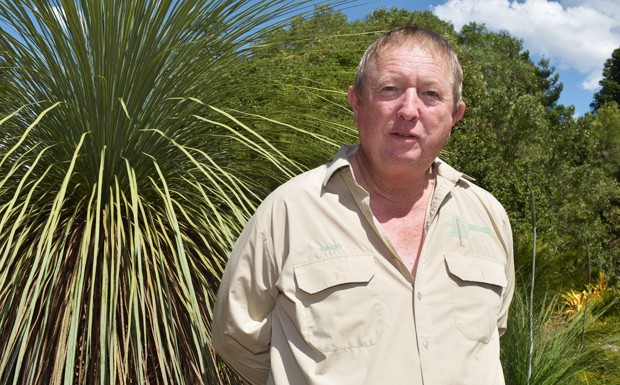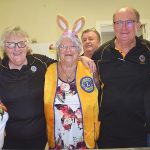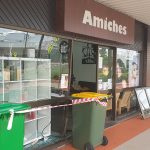
February 16, 2019
On the outskirts of Kingaroy there’s an amazing garden full of rare plants, and an amazing man who knows all about them.
There’s rainforest trees, cycads, ferns, grasstrees, bottlebrushes, native ferns … the list goes on.
Many are native to south-east Queensland’s dry rainforests and some still barely exist in the wild.
There’s even Pheballium distans, of Tessmanns Road North fame.
Harry Franz built his first bush house to raise native plants back in 1970 when he was just 16.
He says he inherited his love of gardening from his family.
“My mum and dad, aunties and uncles, and grandmother were all keen gardeners,” he told southburnett.com.au.
Harry’s family has deep roots – if you’ll pardon the pun – in the South Burnett.
His mother’s side dates back to the 1850s when his great-great grandfather arrived to work on Taabinga Station.
There’s family connections to Goodes Inn (the first commercial building in Nanango) as well as the Moore Stone House and there’s even a relative, Charlie Williams, buried outside the walls at the historic Taromeo cemetery (which he built).
His father’s family dates back to 1908 when his grandfather selected land in Nanango.
Harry grew up on the family farm and developed a strong love for all the native trees and animals.
He’s got little patience now for people who deny – for political reasons – that the climate’s changing.
“Climate change is here. We have it in our gardens, it’s in the bush. Climate change is killing trees in the bush,” he said.
“The climate is really making it hard. The temperature can be up in the 30s now in August with hot blasts of wind.
“I have seen plants that have not set one seed. They flower but don’t set seed.
“It’s affecting our grass pastures as well.”
Harry bought his 2ha block, which had formerly been under cultivation, in 1992 and at that time it was almost treeless.
Since then, bunya pines, hoop pines, cycads, xanthorrhoea – many grown from seed – have flourished under his care.
Harry’s favourite is Podocarpus elatus – the brown pine or Illawarra plum – an important bush tucker tree which produces edible berries.
He’s also a fan of Callitris baileyi – Bailey’s cypress pine – which is native to the South Burnett area.
For the green thumbs among you, Harry’s collection of plants also includes:
- Clausena smyrelliana – Also known as “Greg’s wampi”, a rare shrub found in the Maryborough area,
- Alectryon ramiflorus – The “Isis tamarind”, an endangered rainforest tree from the Childers area,
- Denhamia parvifolia – A stunning small-leaved Denhamia which is listed as endangered,
- Pouteria eerwah – The “shiny-leaved condoo”, another endangered south-east Queensland rainforest tree, and
- Lasiopetalum sp. Proston – A critically endangered bush which, as the name implies, is only found in two very small areas near Proston.
Harry’s garden, known as the “Araucaria Arboretum”, is open by appointment to enthusiasts and has also hosted some weddings.
He also has many plants for sale, mostly young trees ready to plant, including hoop and bunya pines, brown pines, bottle trees and silky oaks.
Harry used to visit the markets but these days prefers if people purchased the plants directly from his nursery … phone him on 0498-081-181 for more information.
























